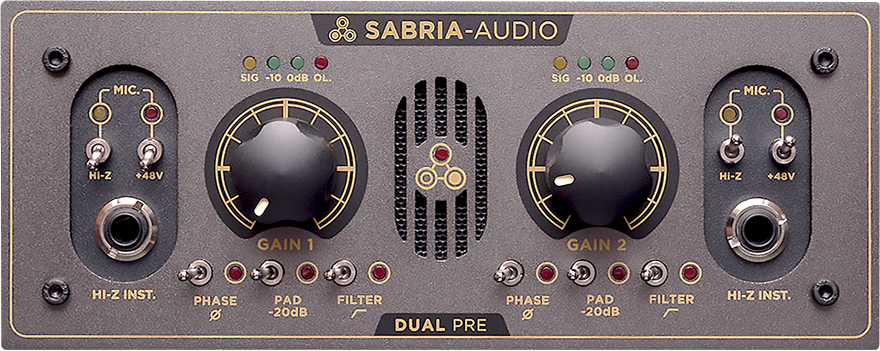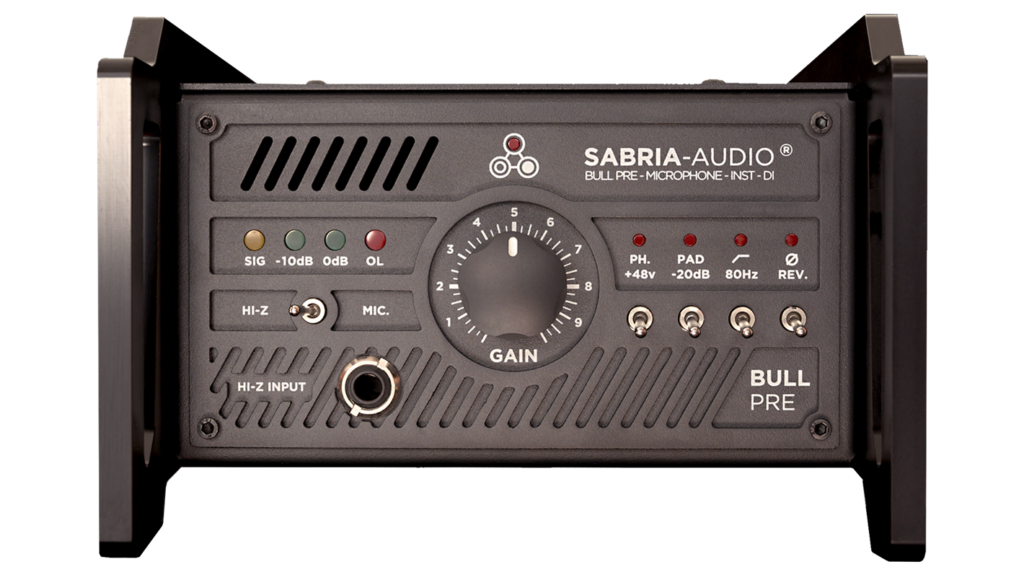Pro-tip #7
Sabria-Audio®
Preamp Harmonic Generator
The sound coloration rainbow.
Harmonic generators in preamps refer to a feature or design aspect that intentionally introduces harmonic distortion to the audio signal. These harmonics, often referred to as even or odd-order harmonics, can add warmth, character, and coloration to the sound. Understanding how preamp harmonic generators work and their impact on audio signals can help in making informed decisions when selecting or using preamplifiers. Here are some key points.
Harmonic Distortion:
Harmonic distortion involves the addition of frequency components that are multiples of the original signal's frequency. Even-order harmonics (e.g., second harmonic, fourth harmonic) are associated with a sense of warmth and richness, while odd-order harmonics (e.g., third harmonic, fifth harmonic) can contribute to a more edgy or gritty character.
Harmonic Generation in Preamps:
Some preamps are designed with intentional harmonic generators or saturation circuits. These circuits can be analog or digital and are meant to impart a specific coloration to the audio signal passing through the preamp.
Tonal Coloration:
Harmonic generators in preamps are used to shape the tonal characteristics of the audio signal. By adding harmonics, the preamp can introduce a subtle or pronounced warmth, reminiscent of vintage analog equipment. This can be particularly desirable in certain musical genres or for specific artistic effects.
Tube vs. Solid-State Harmonics:
In analog preamps, tube-based circuits are known for producing even-order harmonics, contributing to a smooth and pleasing coloration. Solid-state preamps may also have harmonic generators, but the harmonic content might lean more towards odd-order harmonics, resulting in a different sonic signature.
Saturation Control:
Some preamps with harmonic generators offer saturation control or a "drive" knob that allows the user to control the amount of harmonic distortion introduced. This provides flexibility in dialing in the desired level of coloration, ranging from subtle warmth to more pronounced saturation.
Musical Aplications:
Harmonic generators find applications in various musical contexts. For example, in recording and mixing, adding harmonics to certain instruments or vocals can help them cut through a mix or add a vintage vibe. In live sound, it can enhance the character of instruments in a performance.
Artistic Expressions:
The use of harmonic generators in preamps is often considered a tool for artistic expression. Musicians and engineers may choose preamps with specific harmonic characteristics to shape the sonic identity of their recordings or performances.
It's important to note that while harmonic generators can be a desirable feature, their appropriateness depends on the specific requirements of the audio production. Different preamps and harmonic generation circuits can impart distinct sonic flavors, and personal taste plays a significant role in choosing the right preamp for a given application. It's recommended to experiment with different preamp options to discover the sonic characteristics that align with your artistic vision.
The Sabria-Audio® Source Tube Preamp, brings a genuine feature called SVS Generator, a subtle harmonic generator that unveils the musicality of your audio source. Here, we're not talking about distortion based on tube output + transformer, but rather an elegant electronic recipe: presence and musicality. Feel free to use it liberally! :-)"







